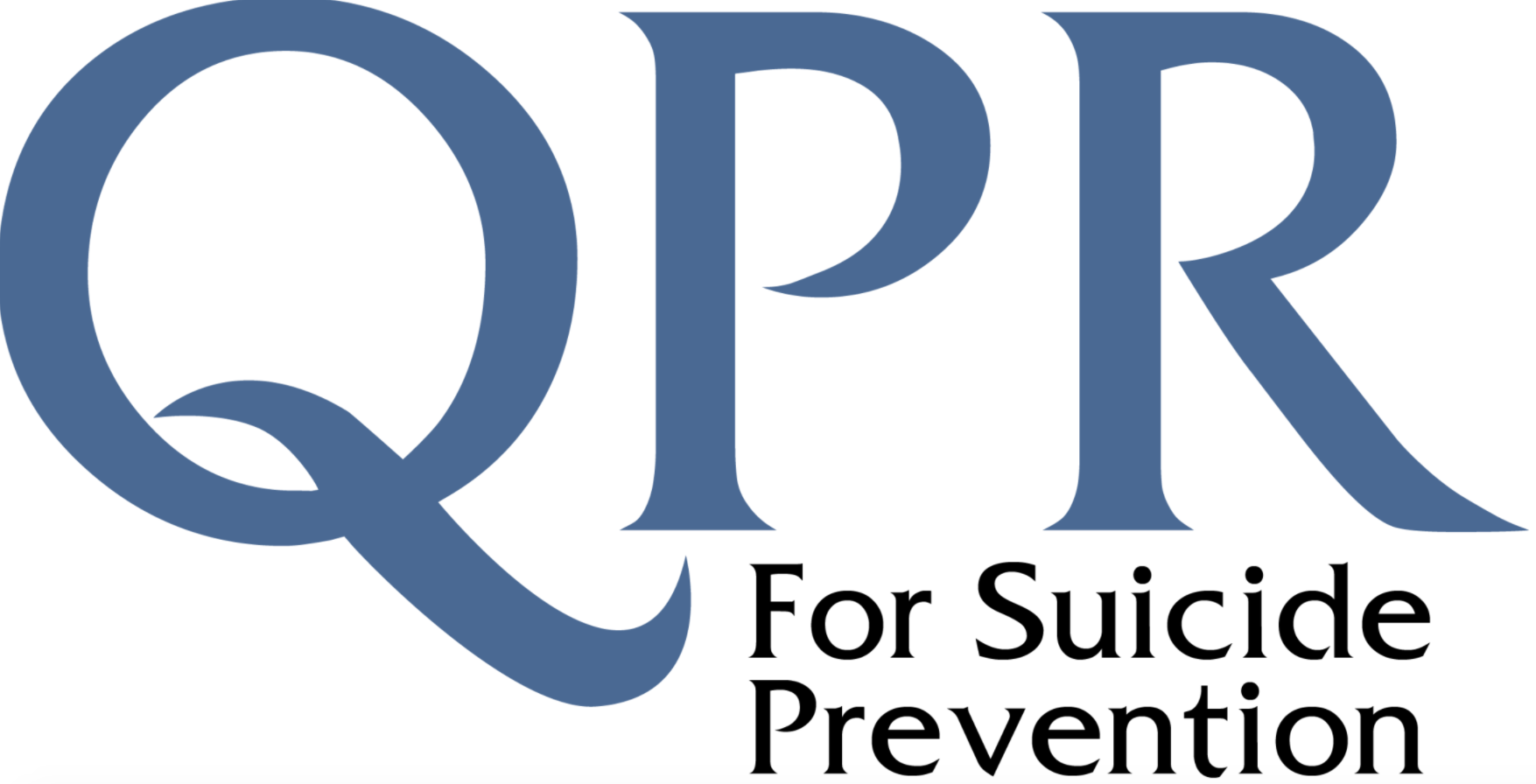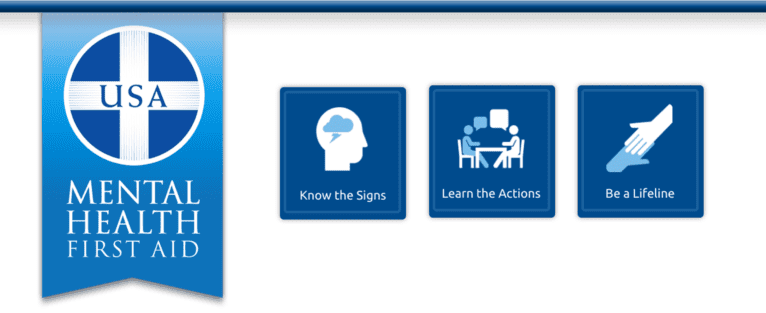
Suicide Prevention and Mental Health Trainings.
** This page is no replacement for crisis support. If you or someone you know is in crisis and need help immediately, call a crisis hotline or your local crisis team:
National Suicide Hotline: 1-800-273-8255
Central Michigan Community Mental Health - Crisis Team: 1-800-317-0708
The purpose of this resource page:
To provide you with training opportunities you can bring to your community/school/church/agency.
To provide stakeholders with information to better understand suicide.
To assist in decreasing discrimination of suicidal ideation and normalize the conversation.
To review some options or resources available when you, or someone you know is experiencing the crisis of suicidal ideation.
Question Persuade Refer
The QPR mission is to reduce suicidal behaviors and save lives by providing innovative, practical and proven suicide prevention training. The signs of crisis are all around us. We believe that quality education empowers all people, regardless of their background, to make a positive difference in the life of someone they know.
What does QPR mean?
QPR stands for Question, Persuade, and Refer — the 3 simple steps anyone can learn to help save a life from suicide.
Just as people trained in CPR and the Heimlich Maneuver help save thousands of lives each year, people trained in QPR learn how to recognize the warning signs of a suicide crisis and how to question, persuade, and refer someone to help. Each year thousands of Americans, like you, are saying "Yes" to saving the life of a friend, colleague, sibling, or neighbor.
What is a Gatekeeper?
According to the Surgeon General’s National Strategy for Suicide Prevention (2001), a gatekeeper is someone in a position to recognize a crisis and the warning signs that someone may be contemplating suicide.
As a QPR-trained Gatekeeper you will learn to:
Recognize the warning signs of suicide
Know how to offer hope
Know how to get help and save a life
Training Duration: 1-1.5 hours
Youth Mental Health First Aid
Youth Mental Health First Aid is designed to teach parents, family members, caregivers, teachers, school staff, peers, neighbors, health and human services workers, and other caring citizens how to help an adolescent (age 12-18) who is experiencing a mental health or addictions challenge or is in crisis. Youth Mental Health First Aid is primarily designed for adults who regularly interact with young people.
The course introduces common mental health challenges for youth, reviews typical adolescent development, and teaches a 5-step action plan for how to help young people in both crisis and non-crisis situations. Topics covered include anxiety, depression, substance use, disorders in which psychosis may occur, disruptive behavior disorders (including AD/HD), and eating disorders.
Training Duration: 6-8 hours
Quick thoughts on Suicide:
Thoughts of suicide are not abnormal. You are not broken or alone. (even if you feel alone, there are people who will listen and love you).
You do not have to act on thoughts of suicide.
Consider telling someone what you're feeling. Even someone you don't know very well. (sometimes it is easier to talk to people you don't know).
Suicidal Ideation (thoughts of suicide) may feel totally encompassing, overwhelming or even comfortable; remember, emotions and thoughts are waves of moments in time, find your support people to help you through those moments. You have the ability to live long enough to get through these moments.
Suicide Risk Factors and Warning Signs
While there is no single cause for suicide, there are risk factors and warning signs which may increase likelihood of an attempt. Learning them can save lives.
What leads to suicide?
There’s no single cause for suicide. Suicide most often occurs when stressors and health issues converge to create an experience of hopelessness and despair. Depression is the most common condition associated with suicide, and it is often undiagnosed or untreated. Conditions like depression, anxiety, and substance problems, especially when unaddressed, increase risk for suicide. Yet it’s important to note that most people who actively manage their mental health conditions go on to engage in life.
Suicide risk factors
Risk factors are characteristics or conditions that increase the chance that a person may try to take their life.
Mental health conditions
Depression
Substance use problems
Bipolar disorder
Schizophrenia
Personality traits of aggression, mood changes and poor relationships
Conduct disorder
Anxiety disorders
Environmental Conditions
Access to lethal means including firearms and drugs
Prolonged stress, such as harassment, bullying, relationship problems or unemployment
Stressful life events, like rejection, divorce, financial crisis, other life transitions or loss
Exposure to another person’s suicide, or to graphic or sensationalized accounts of suicide
Historical Conditions
Previous suicide attempts
Family history of suicide
Childhood abuse, neglect or trauma
Suicide warning signs
Something to look out for when concerned that a person may be suicidal is a change in behavior or the presence of entirely new behaviors. This is of sharpest concern if the new or changed behavior is related to a painful event, loss, or change. Most people who take their lives exhibit one or more warning signs, either through what they say or what they do.
Warning sign: Talk
If a person talks about:
Killing themselves
Feeling hopeless
Having no reason to live
Being a burden to others
Feeling trapped
Unbearable pain
Warning sign: Behavior
Behaviors that may signal risk, especially if related to a painful event, loss or change:
Increased use of alcohol or drugs
Looking for a way to end their lives, such as searching online for methods
Withdrawing from activities
Isolating from family and friends
Sleeping too much or too little
Visiting or calling people to say goodbye
Giving away prized possessions
Aggression
Fatigue
Warning sign: Mood
People who are considering suicide often display one or more of the following moods:
Depression
Anxiety
Loss of interest
Irritability
Humiliation/Shame
Agitation/Anger
Relief/Sudden Improvement
** content pulled from online resource: https://afsp.org/


